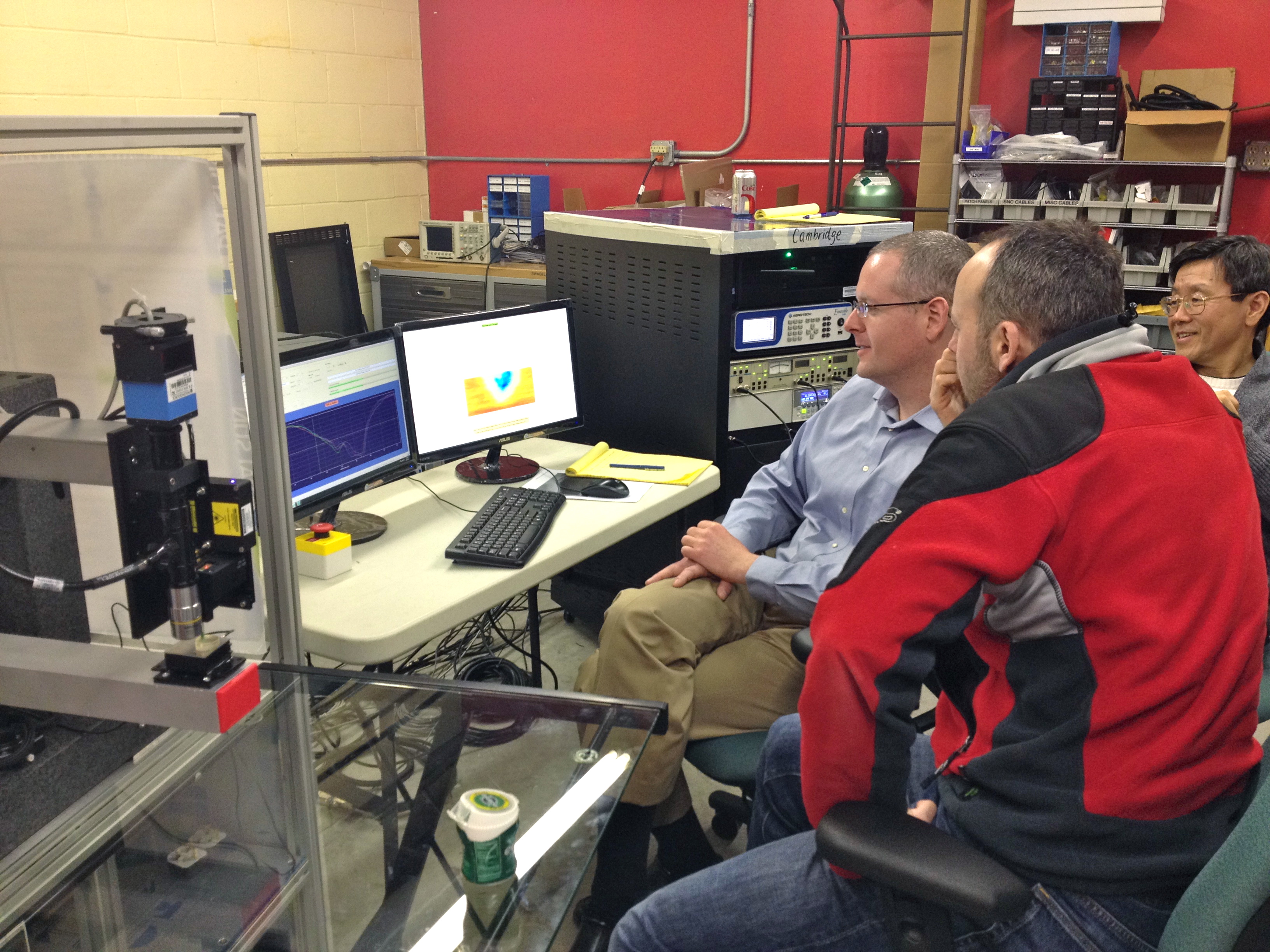MTJ microscope ready to ship
Last week was a busy one for the group, as Nono and I headed over to the U.S.A. to visit two of the companies providing key equipment for the NanoPaleoMag lab. First, I went to Columbus, Ohio to visit the headquarters of Lakeshore Cryotronics Inc., builders of our recently installed VSM/AGM system. There I gave a talk about the application of FORC diagrams to rock magnetism, and discussed the possibility of developing our FORCinel software for current and future systems. The rock magnetic community is a new one for Lakeshore, and it is great to see their commitment to continuing to support our needs with future generations of their VSM/AGM system. This year’s IRM meeting in Santa Fe will include a one day workshop on FORC diagrams, which Lakeshore will attend. This will be an opportunity for the community to discuss with them future developments in their systems. For a copy of the FORC presentation see our Publications page.
Next we spent two days in Boston visiting Micro Magnetics, who are building the centrepiece of the NanoPaleoMag lab – a scanning magnetic microscope that will enable us to make highly localised remanence measurements in specific regions of interest. The microscope uses a Magneto Tunnel Junction (MTJ) sensor that is capable of measuring nanoTesla fields with a spatial resolution of around 10 µm. Our highly customised version of their CS-1000 microscope is optimised for the measurement of static magnetic fields above polished rock samples and then correlating them with high magnification optical images. Our visit gave us the chance to see the system operating for the first time and get some basic training before the unit ships at the end of the month. Our preliminary measurements left us in no doubt of the potential of this instrument to revolutionise the way we measure remanence at local levels in challenging samples. The images below show Nono together with MicroMagnetics CEO Gang Xiao and Chief Engineer Matt Carter admiring the first measurements of the magnetic field around a ~ 200 µm grain of synthetic dusty olivine. Based on these first results, the outlook for future NPM research is looking very positive. We can’t wait to get started!



Leave a Reply